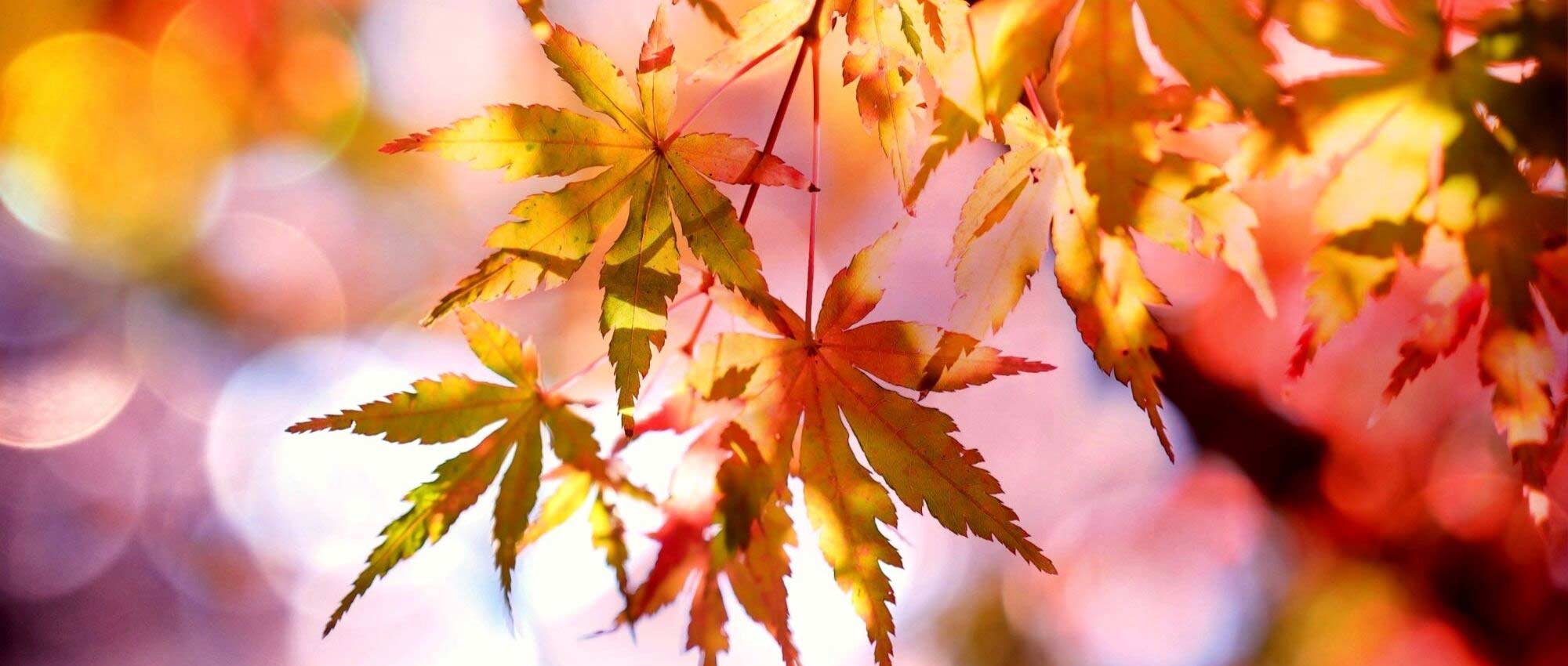
Japanese maples: how to choose the right variety?
Depending on your situation and desired effect
Contents
Japanese maples are superb trees or shrubs with impeccable architecture and colourful foliage, which often turns brilliant colours in autumn. There are numerous varieties, offering great diversity in forms and colours of foliage. Some reach substantial dimensions and make superb specimen trees in a large garden. Others are dwarf, making them suitable for small gardens or for growing in a pot on a terrace. Japanese maples can have an upright or erect habit, or a trailing, arching silhouette. Their foliage is more or less dissected depending on variety. It can take a wide range of hues: some maples have green leaves, others purple leaves, while others display variegated foliage. Here’s everything you need to know to choose the right variety for your situation and preferences!
Choosing a maple according to the growing method
-
In a pot, on a terrace or in an inner courtyard
It is perfectly possible to grow a Japanese maple in a large pot or planter, but this requires choosing compact, easy-to-grow varieties, which will not become too large. We particularly recommend Acer palmatum ‘Dissectum’, which has finely dissected leaves. It grows fairly slowly and generally does not exceed 1.60 m in height. You can also opt for Acer palmatum ‘Ornatum’, which bears foliage similar in shape but bronze-red in colour. For attractive palmate foliage, choose maple ‘Skeeter’s Broom’, which displays bright red leaves in spring, purplish in summer, then red again in autumn. Its small size, not exceeding 1.50 m in height, makes it ideal for pot cultivation! Finally, variety ‘Mystic Jewel’ also merits attention for its very original colouring, with mauve nuances.
Whatever variety you choose, plant it in a large, fairly wide pot, with drainage holes at the bottom. Use a rich, free-draining, slightly acidic substrate, and place the pot in partial shade, for example on a terrace, in a patio or an inner courtyard.
For more information, see Jean-Christophe’s care sheet on growing Japanese maples in pots!
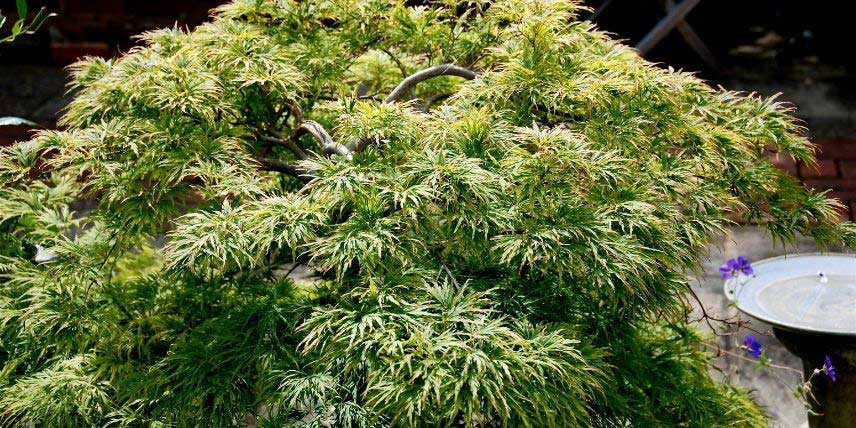
Acer palmatum ‘Dissectum’ (photo Henry Lawford)
-
In open ground in a small garden
If you wish to grow Japanese maple in open ground but your garden is fairly small, or you are planting it in a courtyard, choose varieties slightly larger than those for pots, but still suited to the space available. Avoid the most imposing varieties (remember some Japanese maples can reach up to 10 m in height and spread!) Acer palmatum ‘Katsura’ seems a good compromise. It develops a dense, upright silhouette and offers very luminous foliage! Its leaves are yellow‑orange in spring, becoming light green, then orange again in autumn. If you want a bush with red foliage, opt for maple ‘Red Pygmy’, which has leaves divided into long, narrow lobes and takes on a fairly spreading silhouette… unless you choose maple ‘Shaina’, with an erect habit and deep burgundy leaves!
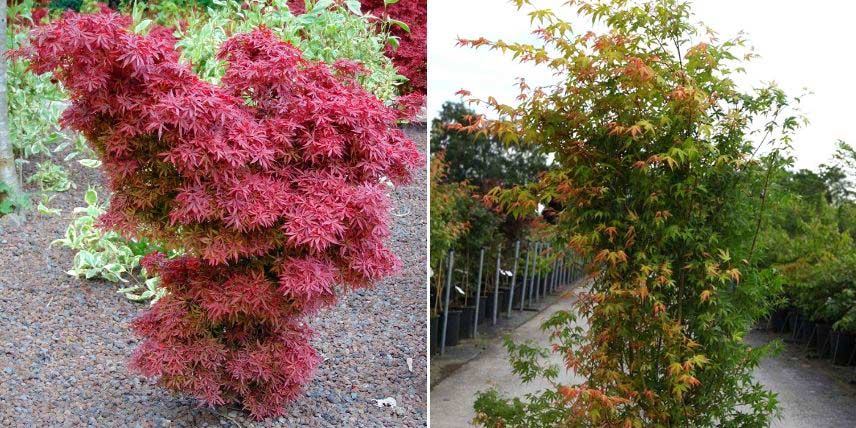
Acer palmatum ‘Shaina’ and Acer palmatum ‘Katsura’
-
In open ground in a large garden
If you are lucky enough to have a large garden with plenty of space, you can choose the most imposing maples. They are wonderful when planted as specimens, for example in the middle of a short grass meadow, which really showcases their architecture. (But it is also possible to plant them in groups to form a grove… the effect will be even more impressive in autumn!) We recommend Acer palmatum ‘Atropurpureum’, which offers lovely purplish foliage, turning red in autumn. You can also choose Acer palmatum ‘Osakazuki’, which has light green leaves that take on superb autumn colours.
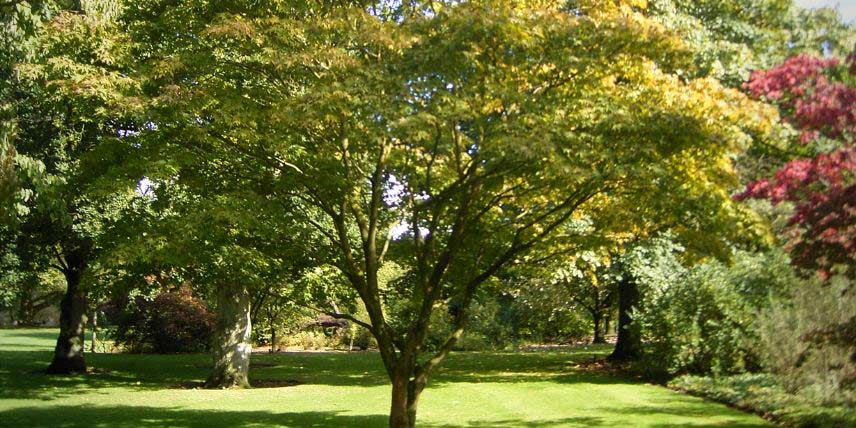
Acer palmatum ‘Osakazuki’
Choosing bush form: upright- or hanging down-habit maple?
Maples with an erect habit have an elegant silhouette, nicely ramified and very graphic, forming a somewhat rounded crown. They are perfect for planting as specimens. You can choose the species-type Acer palmatum, which offers beautiful pale green leaves, turning red in autumn. You can also opt for Acer palmatum ‘Osakazuki’, with large palmate leaves, larger than those of other varieties. For purple foliage, choose Acer palmatum ‘Atropurpureum’. Finally, if you want a compact variety with an erect habit, opt for Acer palmatum ‘Red Pygmy’.
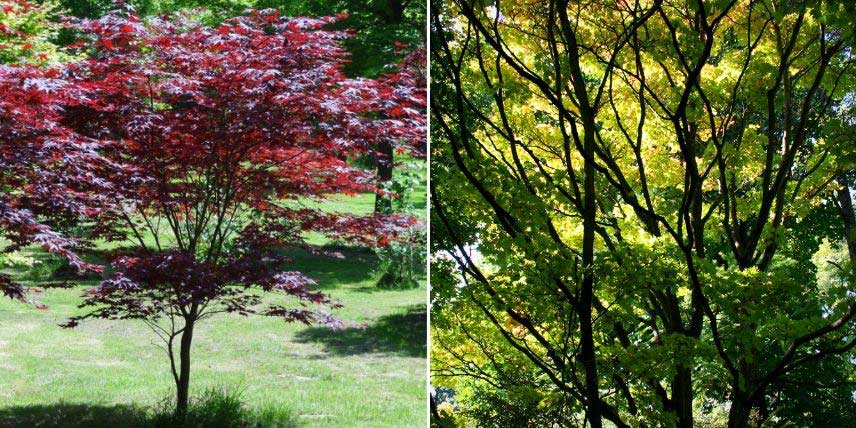
Acer palmatum ‘Atropurpureum’ and Acer shirasawanum ‘Aureum’ (photo Jean-Pol Grandmont)
Other maples have a hanging down, slightly weeping habit. This is especially the case with Acer palmatum ‘Ornatum’. Its spreading, arched branches give it a very rounded, dome-like appearance. Generally, its leaves trail to ground level, hiding its branches and making it very distinctive. You can also choose Acer ‘Inaba-Shidare’, which has very dissected leaves in purplish-red colour, borne on branches whose tips arch towards the ground.
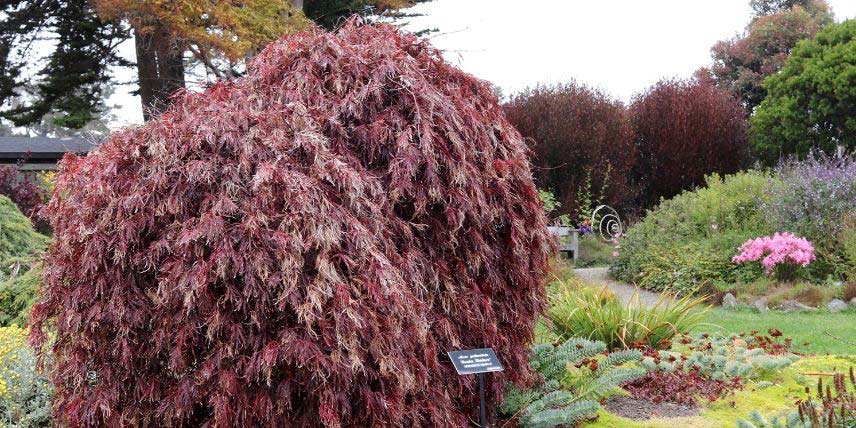
Acer palmatum ‘Inaba-Shidare’ (photo Don McCulley)
Discover other Japanese Maples
View all →Available in 6 sizes
Available in 1 sizes
Available in 1 sizes
Available in 1 sizes
Available in 1 sizes
Available in 4 sizes
Available in 1 sizes
Available in 3 sizes
Available in 2 sizes
Available in 3 sizes
Choose by foliage colour and shape
-
Leaf shape
If you appreciate maples with very finely divided leaves, choose Acer palmatum ‘Dissectum’, whose green leaves appear laciniate. If you prefer a purplish‑red hue, choose Acer palmatum ‘Inaba‑shidare’.
Some Japanese maples bear very small leaves, as with variety ‘Butterfly’, where they do not exceed 5 cm in length. They create a very delicate, airy and truly attractive effect!
Discover also Acer palmatum ‘Shishigashira’, which has very original crisped foliage.
Finally, Acer japonicum ‘Aconitifolium’ stands out for its aconite‑like leaves! They are unusual, with a shape very different from that of other maples!
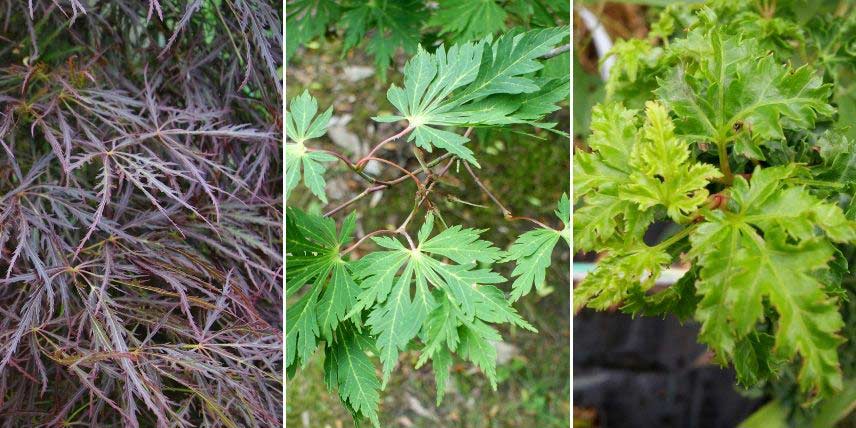
Acer palmatum ‘Dissectum’ (photo Bostonian13), Acer japonicum ‘Aconitifolium’ (photo Kenraiz) and Acer palmatum ‘Shishigashira’
-
Leaf colour
Japanese maples offer a fine diversity of colours depending on variety! If you want green foliage in summer, choose species Acer palmatum or Acer palmatum ‘Dissectum’… which does not prevent them from taking on superb orangey hues in autumn! For a maple whose foliage remains red–purplish all year (darker or brighter depending on season), choose maple ‘BloodGood’. For variegated foliage, we recommend variety Acer palmatum ‘Butterfly’, whose small leaves are pale green margined with pink or cream depending on season. Finally, some maples are notable for the brightness of their foliage. This is particularly true of Acer shirasawanum and cultivars derived from it: ‘Aureum’, ‘Jordan’, ‘Moonrise’… We especially recommend variety Acer shirasawanum ‘Aureum’, which offers light green foliage in spring, golden yellow in summer, and orange in autumn. Acer shirasawanum ‘Moonrise’ is also interesting for its changing hues: pink‑orange in spring, green–yellow in summer, then orange–copper in autumn.
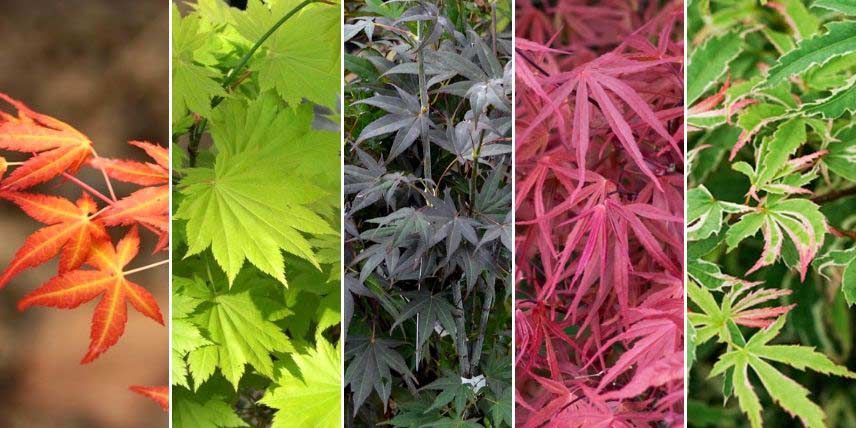
Acer palmatum ‘Orange Marmalade’, Acer shirasawanum (photo André Abrahami), Acer palmatum ‘Atropurpureum’, Acer palmatum ‘Red Pygmy’ (photo Dinkum), and Acer palmatum ‘Butterfly’
→ Read also: 7 Japanese maples with red leaves
-
For superb autumn colours!
Some Japanese maples have, more than others, the ability to become flamboyant in autumn. We particularly recommend variety ‘Osakazuki’. It bears large light‑green leaves in spring and summer, which then take on a vivid blood‑red colour in autumn. You can also opt for Acer shirasawanum ‘Autumn Moon’, with changing tones: its leaves are salmon‑orange in spring, green in summer, then take on red–pink–orange colours in autumn.
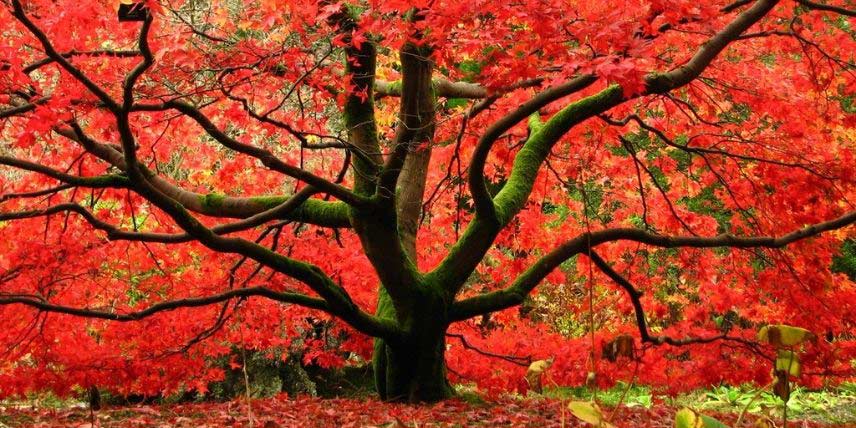
Acer palmatum ‘Osakazuki’ (photo Kloniwotski)
→ Read also: Japanese maples: the most beautiful autumn colours
-
A maple with red branches!
Acer palmatum ‘Sangokaku’ is distinguished by its bright red branches, which makes it very striking! It is also valued for its changing, colourful tones, evolving over the year through shades of green, yellow, pink and orange.
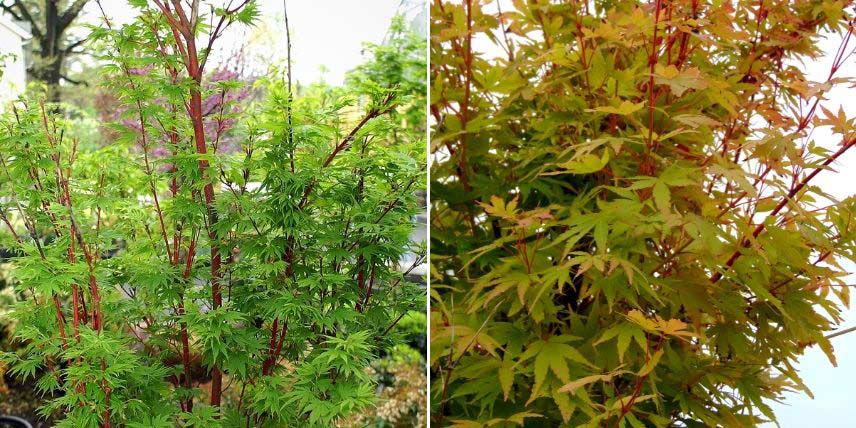
Acer palmatum ‘Sangokaku’
- Subscribe!
- Contents
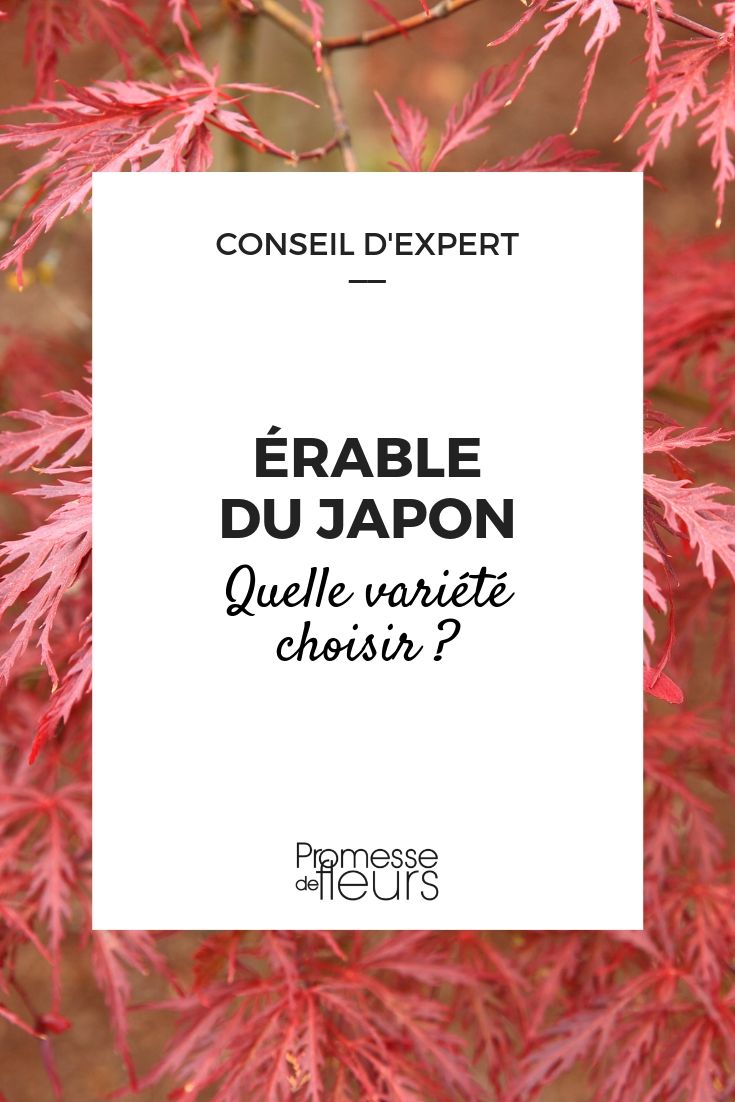
































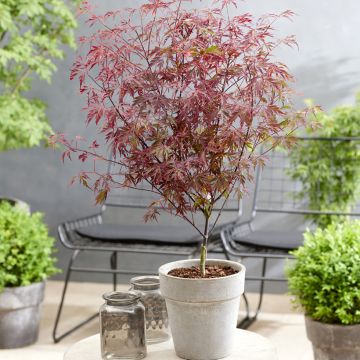

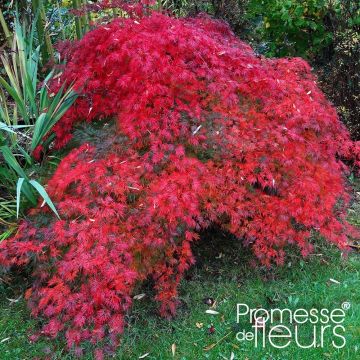
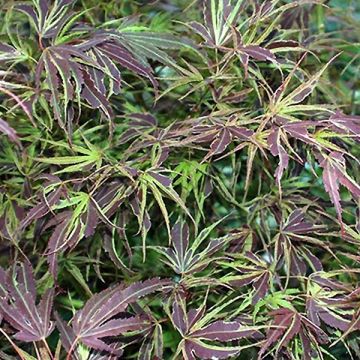


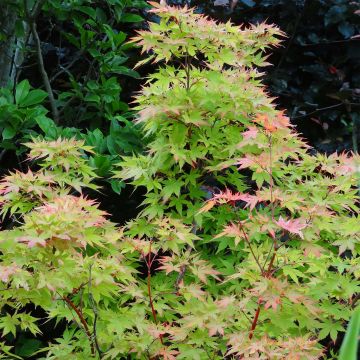
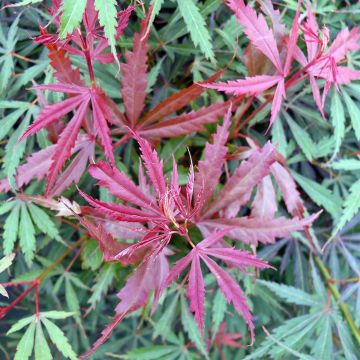
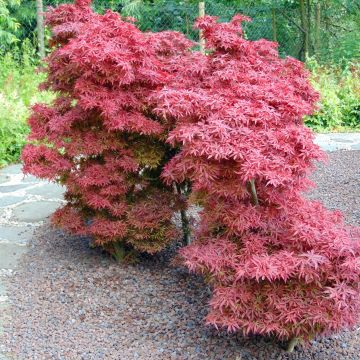
Comments